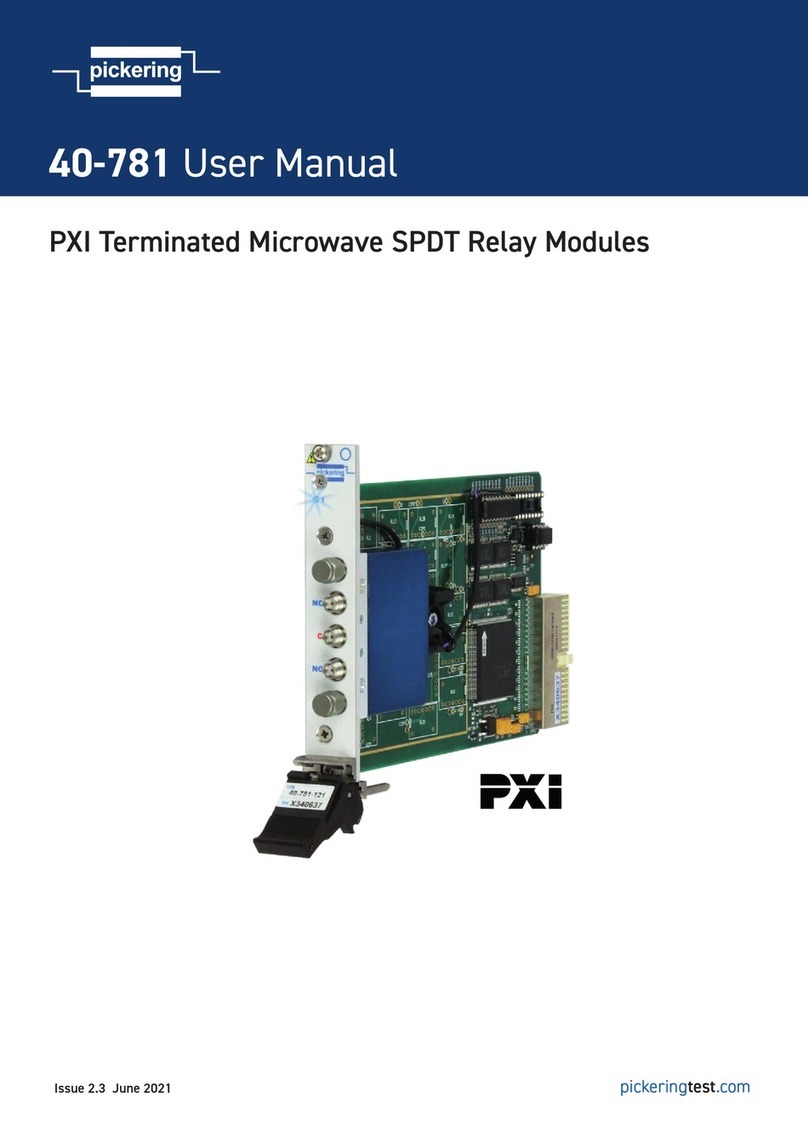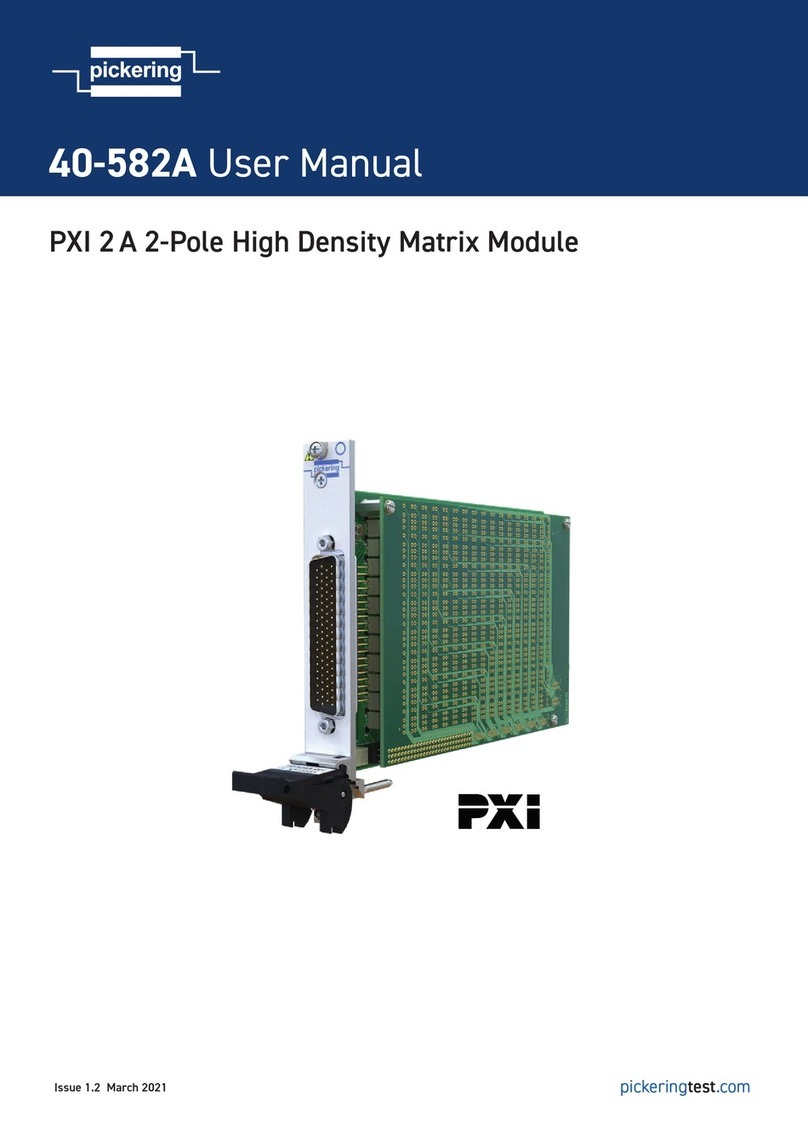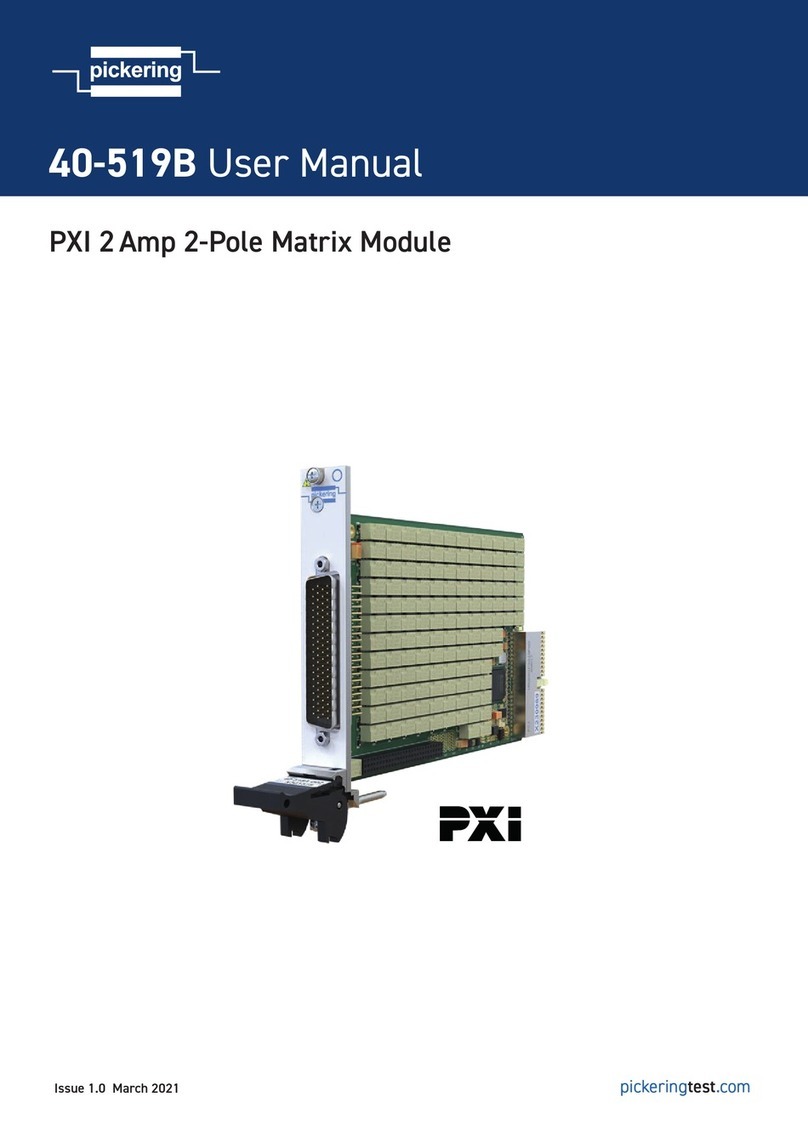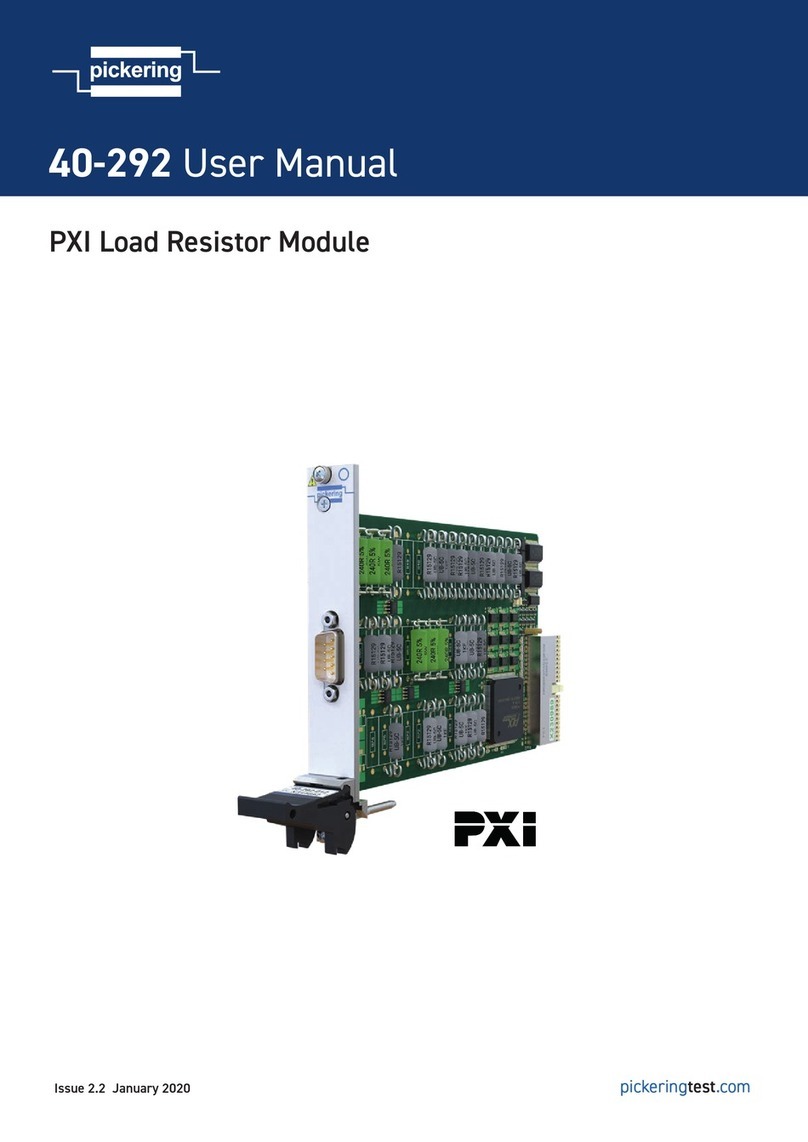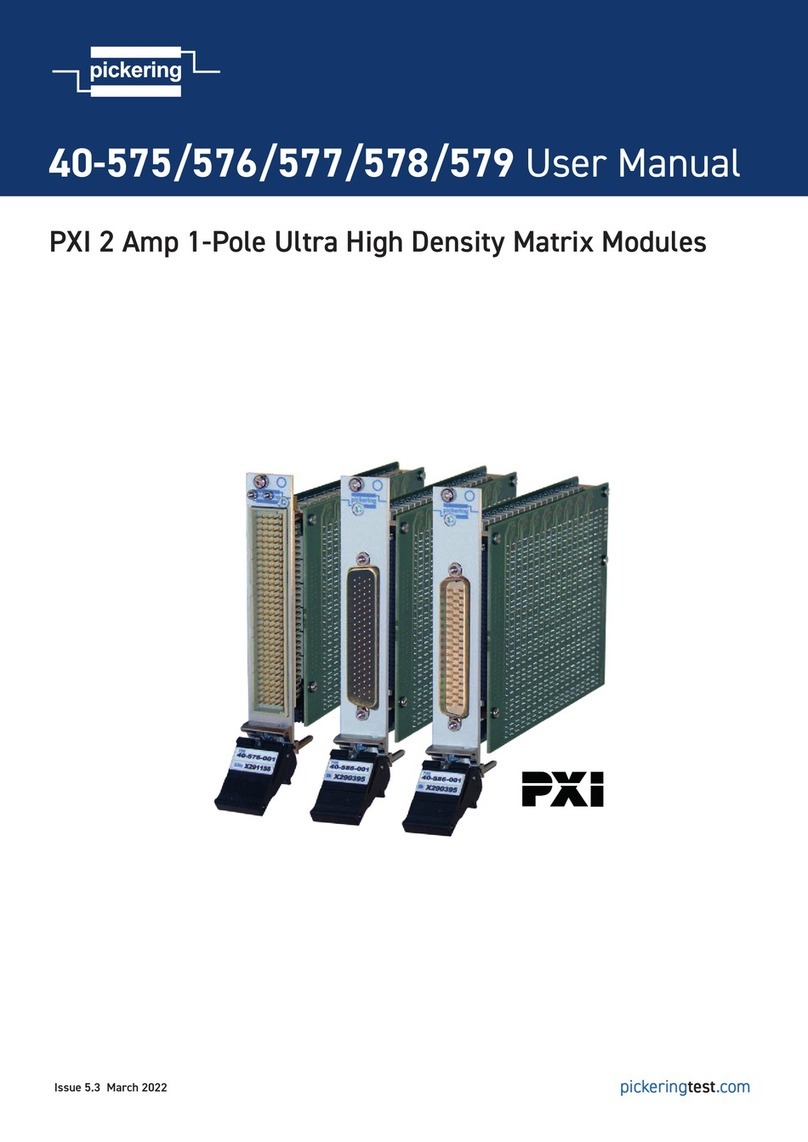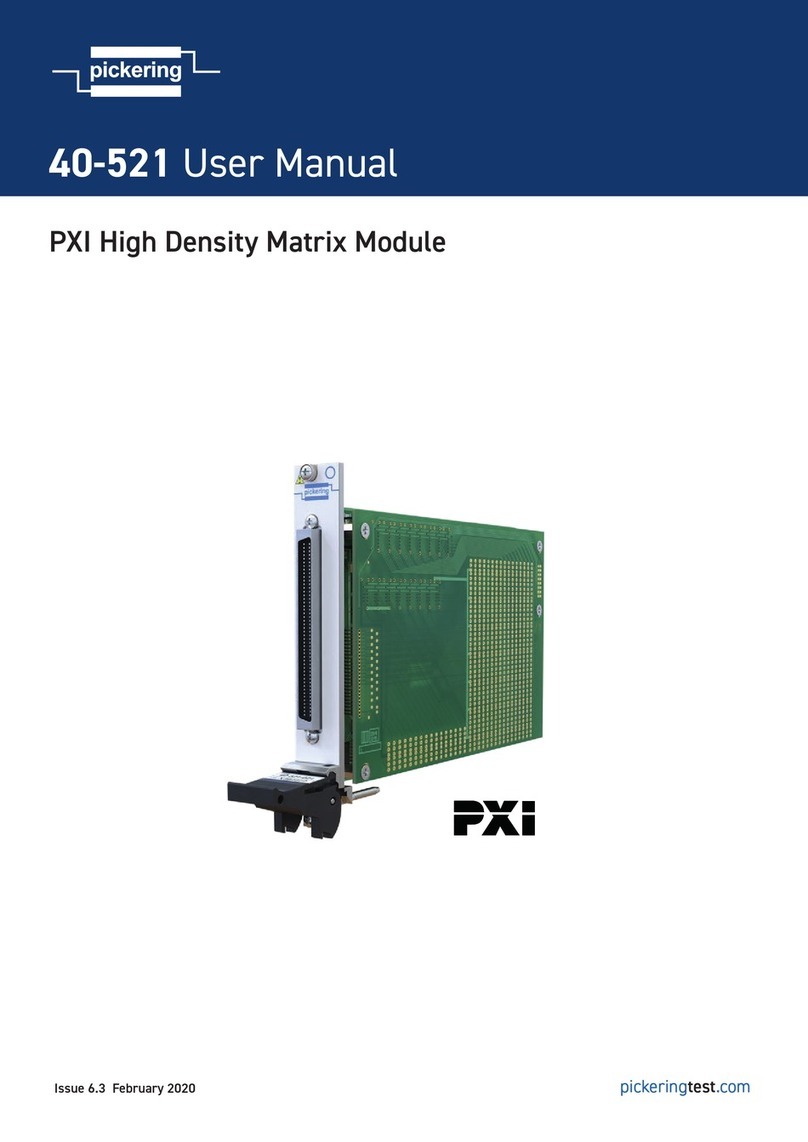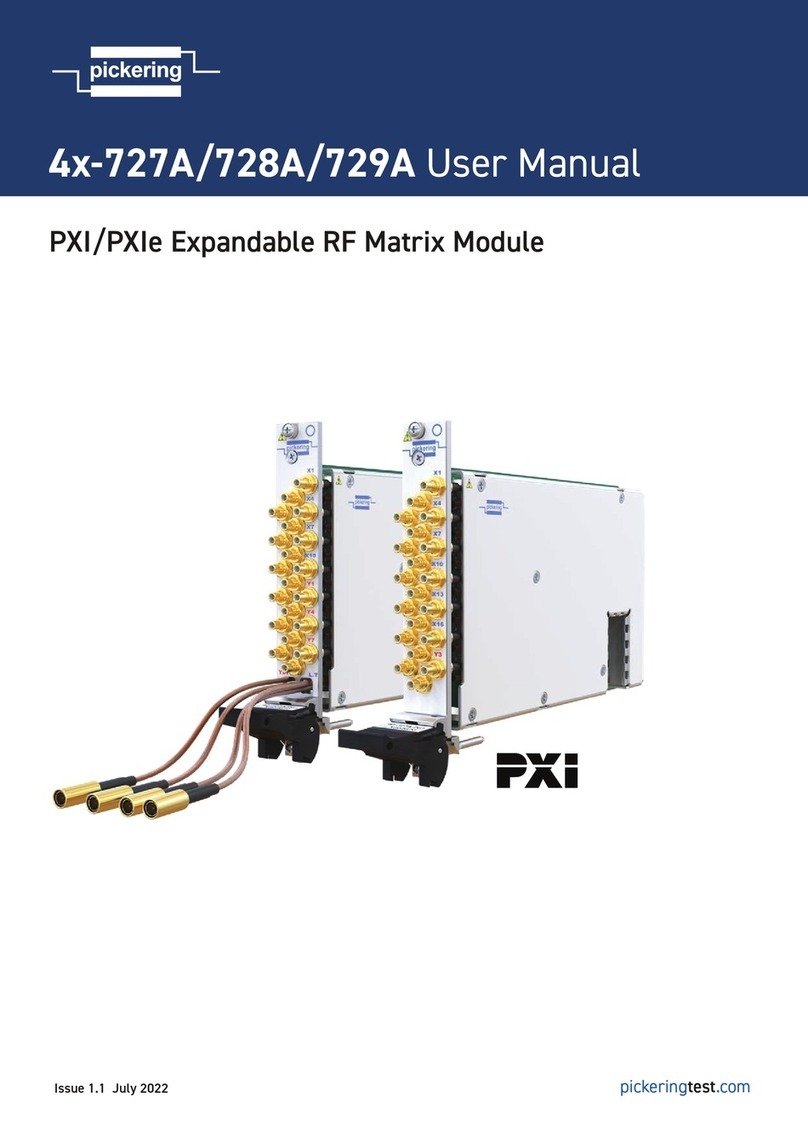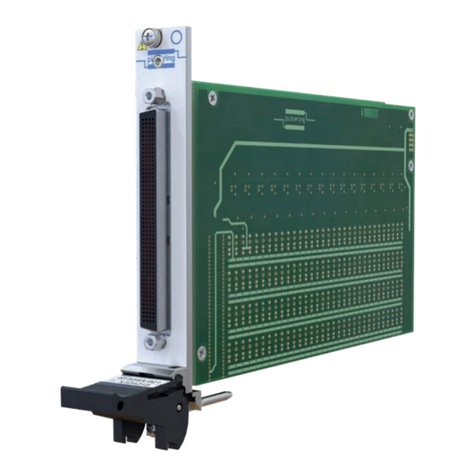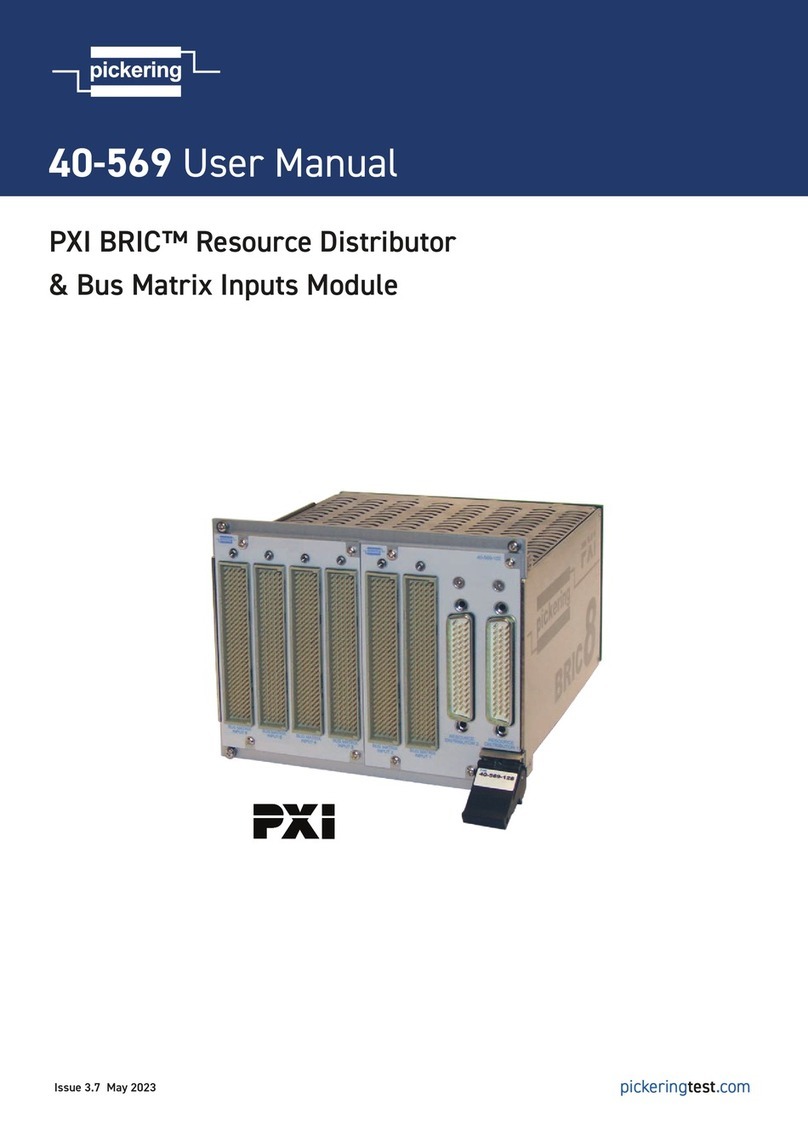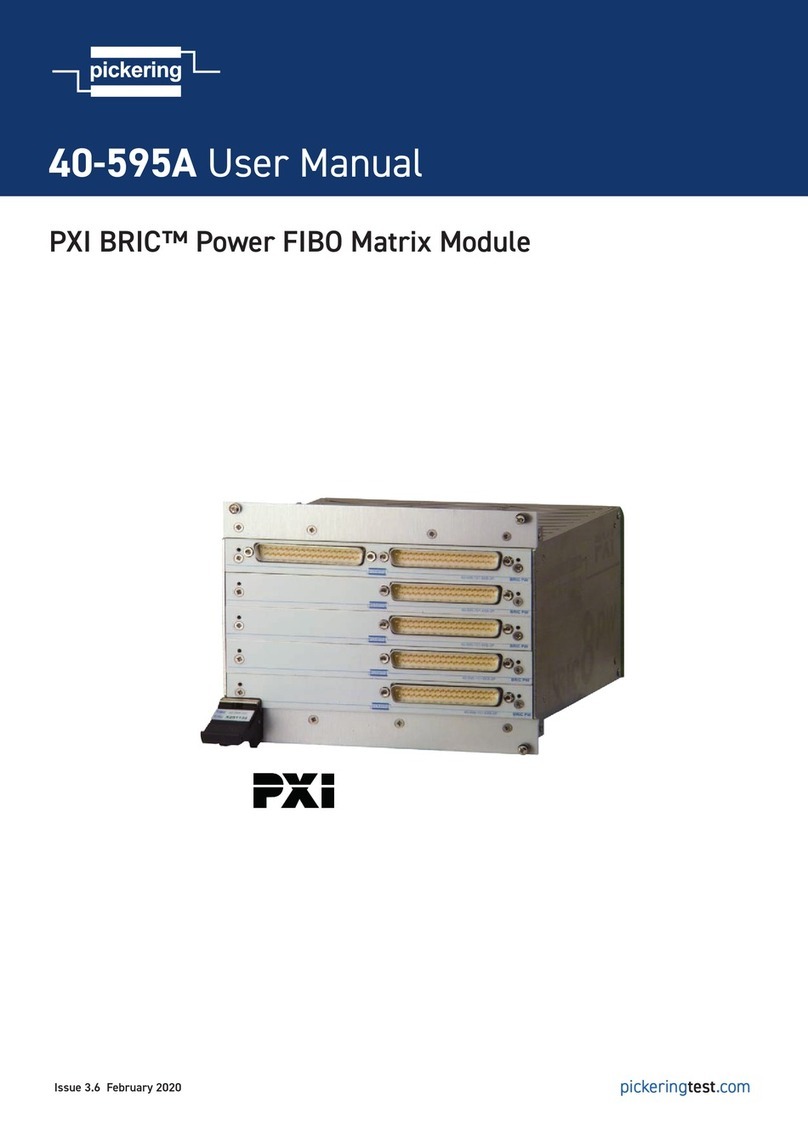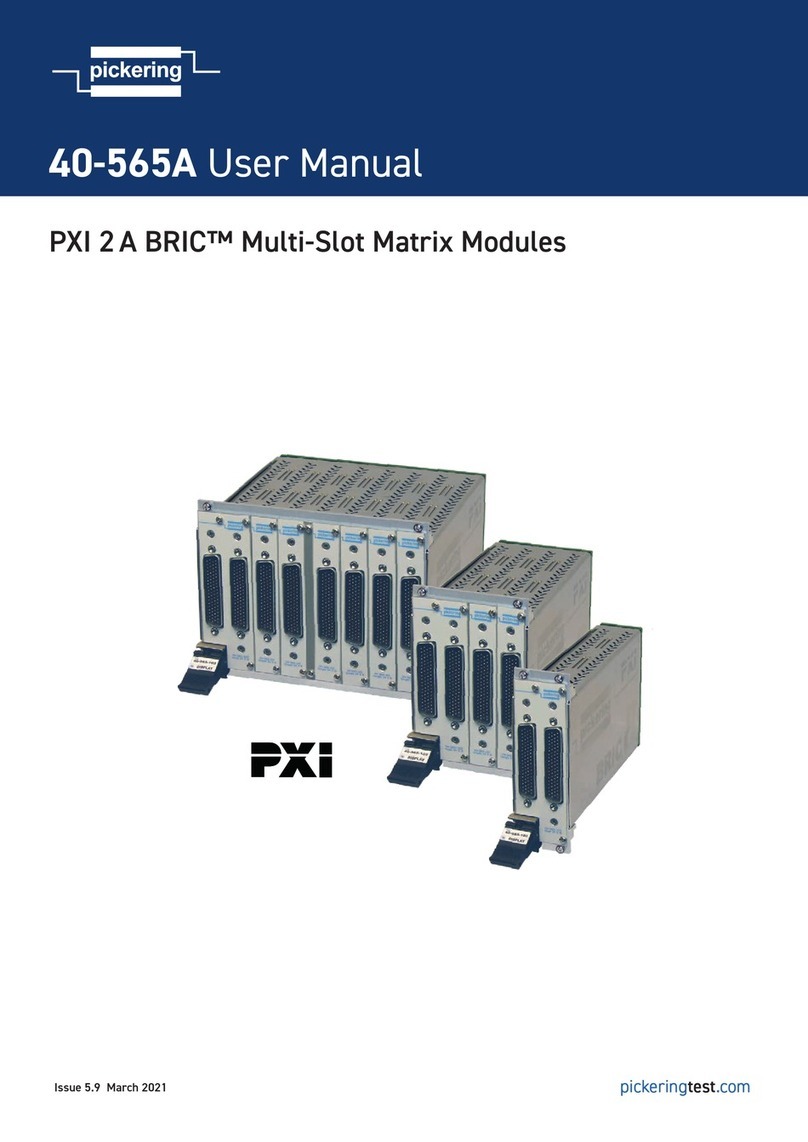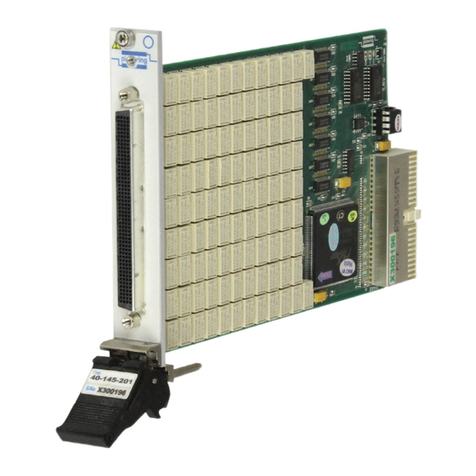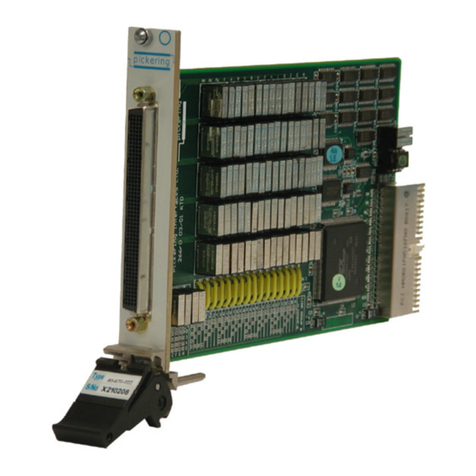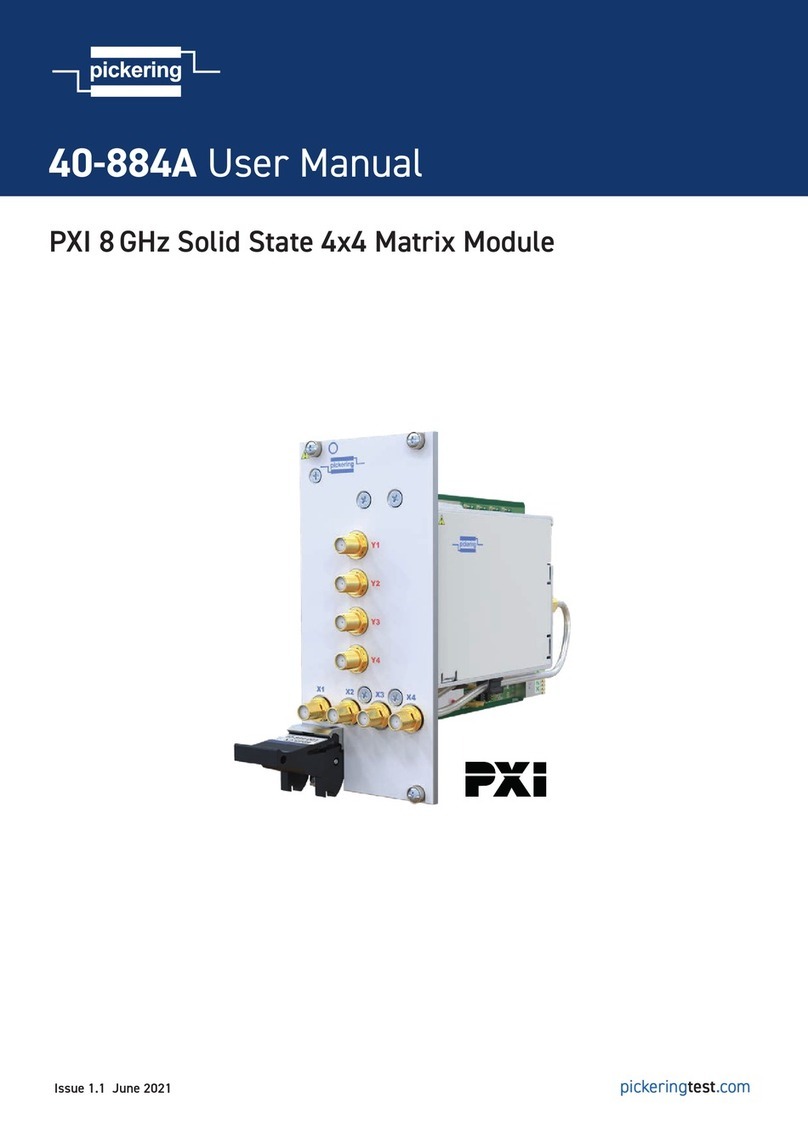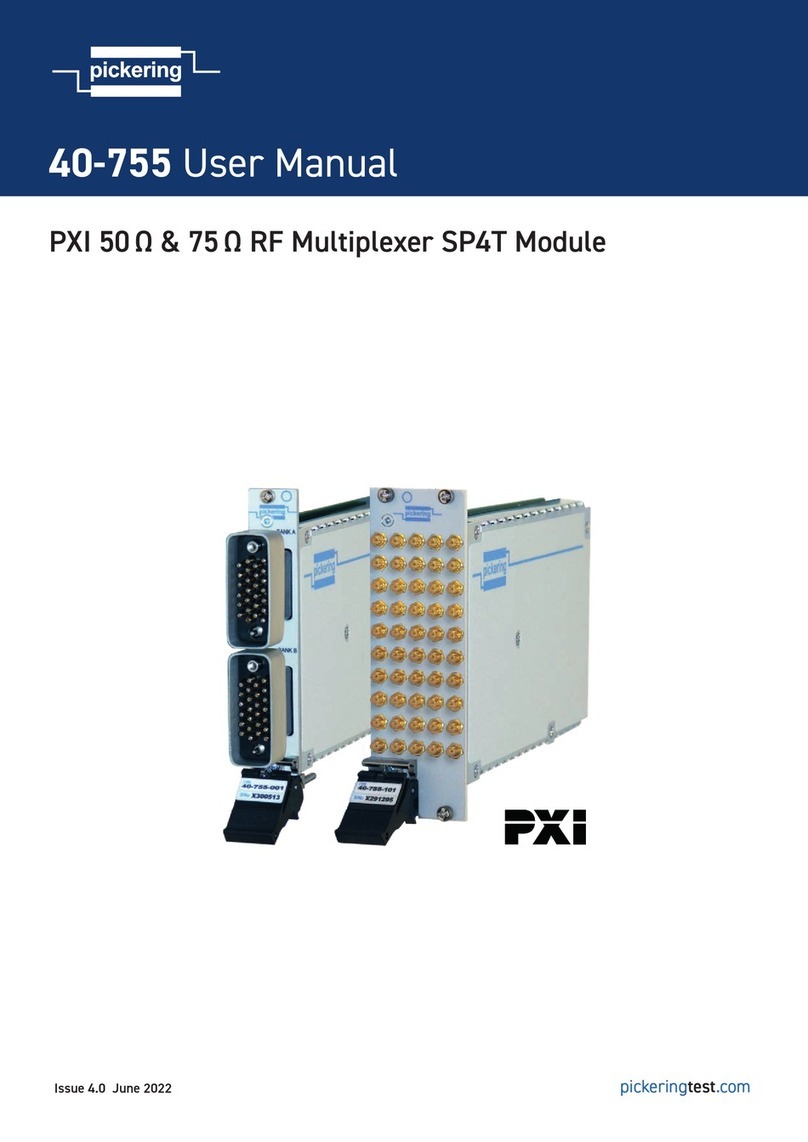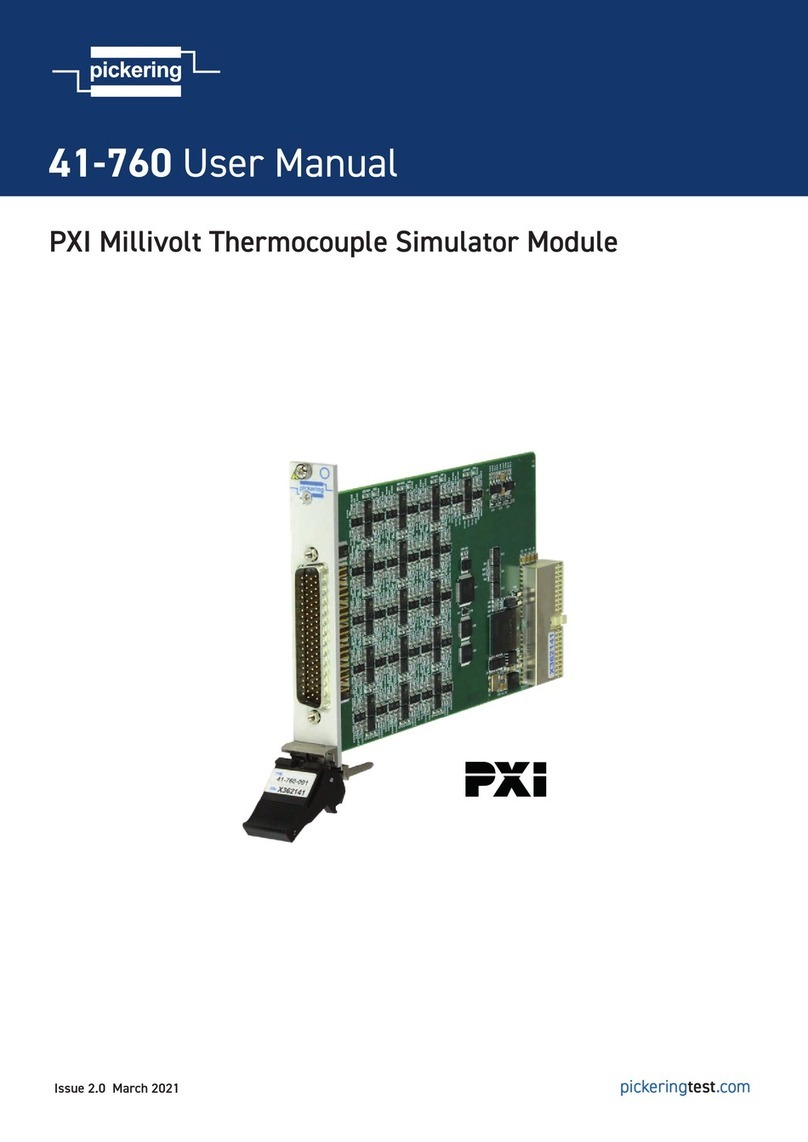
Page 1.1
STRAIN GAUGE SIMULATOR MODULE 40-265
pickering SECTION 1 - TECHNICAL SPECIFICATION
SECTION 1 - TECHNICAL SPECIFICATION
pickeringtest.com
PXI Strain Gauge Simulator Modules 40-265
ISSUE 7.1 OCT 2018
y
Simulates Resistive Strain Gauge Bridge Circuits
y6, 4 or 2 Simulators Per Module
ySimple Software Operation
yFine Resistance Adjustment Over Full Operating Range
yVISA, IVI & Kernel Drivers Supplied for Windows
ySupported by PXI or LXI Chassis
y3 Year Warranty
Diagram for a single channel of the
40-265 Strain Gauge Simulator
Calibration Port
Connector
Calibration
MUX
Programmable
Resistor
Exciation
Port
Bridge
Output
From Other Strain Gauge Channels
Internal
Excitation
Source
CH1 Excite1
CH1 Excite2
CH1 Out2
CH1 Out1
Resistive Strain Gauge
Simulator Channel 1 2 3 4 5 6
Pickering’s Range of PXI Precision Resistor Modules
Model Description Chan. Range Resolution Accuracy
40-260 Precision
Resistor
3 90 Ω - 8 kΩ <10 mΩ 0.1 %
40-261 21.5 Ω - 2.9 kΩ
or 10 Ω - 36 kΩ
<2 mΩ
or <15 mΩ 0.08 %
40-262
RTD
Simulator
18, 12
or 6
90 Ω - 250 Ω or
900 Ω - 2.5 kΩ
<8 mΩ
or <90 mΩ 0.1 %
40-263
4, 8, 12,
16, 20
or 24
40 Ω to 900 Ω,
200 Ω to 4.5 kΩ,
400 Ω to 9 kΩ
<10 mΩ, <50 mΩ
or <100 mΩ 0.1 %
40-265 Strain Gauge
Simulator
6, 4
or 2
350 Ω,
1 kΩ, 1.5 kΩ,
2 kΩ or 3 kΩ
<2 mΩ, <10 mΩ,
<12.5 mΩ, <20 mΩ
or <25 mΩ
0.03 % or
0.06 %
40-297 High Density
Precision
Resistor
18, 9,
6, 4
or 3
Up to 22.3 MΩ 0.125 Ω, 0.25 Ω,
0.5 Ω, 1 Ω or 2 Ω 0.2 %
40-298
Standard Resistor Modules
For applications that do not require the precision or accuracy of our
precision range, look to our Standard Resistor range which includes
models 40-280/1/2, 40-290/1, 40-292, 40-293, 40-294 and 40-295/6
Custom Resistor Modules
If our range of Resistor Modules does not meet your specific
requirements, please contact the sales office to discuss your application.
Customizations include: different start and stop values, current, power,
voltage, precision, accuracy, number of channels, connector etc.
The 40-265 is ideal for testing strain gauge meters in a wide
variety of industrial control systems. It provides 6, 4 or 2
channels of low cost simulation with excellent performance
and is a simple way of replacing in-house developed sensors. It
uses the same resistor bridge techniques of real-world strain
gauges, ensuring accurate emulation under all conditions.
Each channel has a bridge output and an excitation input that
can be driven with AC or DC. The bridge circuit uses three fixed
resistors and one programmable resistor with a narrow range,
fine adjustment and excellent accuracy. The range is sufficient
to simulate quarter, half or full bridge circuits. The standard
bridge impedances are 350 Ω, 1 kΩ, 1.5 kΩ, 2 kΩ and 3 kΩ.
The simulator is simple to use, the variable element can be
programmed using a resistance call. The user is given the
value required to balance the bridge, and the setting can be
varied above and below this value to simulate extension and
compression of a strain gauge.
A simple verification system is provided using a DMM
connected to the calibration port. This allows any channel to
be checked without disconnecting the module from the test
system. The calibration port can also be used to find the bridge
balance setting using the internal DC excitation source. Factory
calibration information and the excellent long term stability of
the bridge means adjustment is not routinely required.
We can offer strain gauge simulators with alternative
resistance ranges and have a wide range of precision
resistance modules that are suitable for simulating individual
strain gauges. Please contact the sales office for information.

